Some of the links in this post may be affiliate links.
The Philodendron Pink Princess is one of the hottest houseplants around. Literally and figuratively! The hot pink variegation is stunning, and nurseries can’t seem to keep this plant in stock. Philodendron Pink Princess is easy to grow, but there are several very important things that you need to know in order to grow this plant to its maximum beauty.
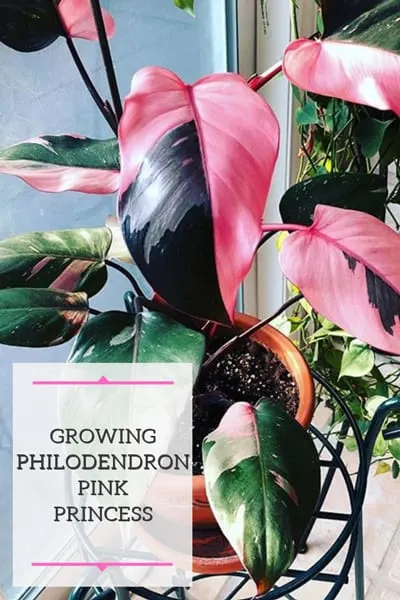
I got lucky and purchased my Philodendron Pink Princess before nurseries started price gouging for them, making them outrageously expensive. These days, they can’t seem to keep them in stock, despite skyrocketing prices.
I will go over some general care tips first on growing this amazing houseplant, and later will reveal a super important tidbit of information that you need to know in order to keep your Philodendron Pink Princess in tip top shape!
Most people don’t know this tip either, but it is absolutely critical and I learned about it after speaking with an expert commercial grower. More on that later though.
Table of Contents
UNDERSTANDING PINK VARIEGATION
One of the fun parts about growing the Philodendron Pink Princess is seeing how variegated each new leaf is!
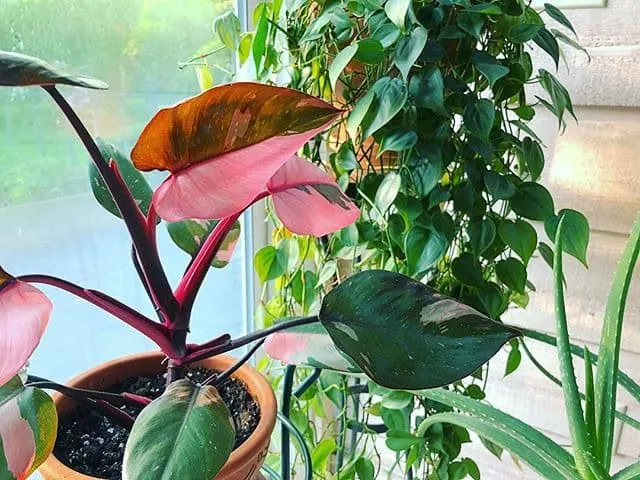
First of all, what is variegation? It is important to understand this so you can manage its growth and so that you know what you can expect from this plant.
According to the Royal Horticultural Society, variegation means when a plant has areas of different color. In the case of the Philodendron Pink Princess, that color is pink.
In many other plants, it may be a creamy white, yellow, and other variations. Normally, the variegation is caused by a mutation in the plant.
The bottom line is that whatever the variegated color is, those sections of the leaves lack chlorophyll that is needed for the plant to photosynthesize and make food from the sun’s energy.
As a result of less chlorophyll being present in variegated plants, they will grow more slowly than their non-variegated counterparts.
Philodendron Pink Princess Care Tips
1. LIGHT
Logee’s Greenhouses recommends good light in order to maximize the coloration in Pink Princess.
What does this mean? As with all philodendrons, they like bright indirect light. Some direct sun is fine, but don’t place this plant in full sun otherwise you will damage the plant. Especially the variegated regions.
I have mine growing very nicely in an East facing window, so it receives some morning sun.
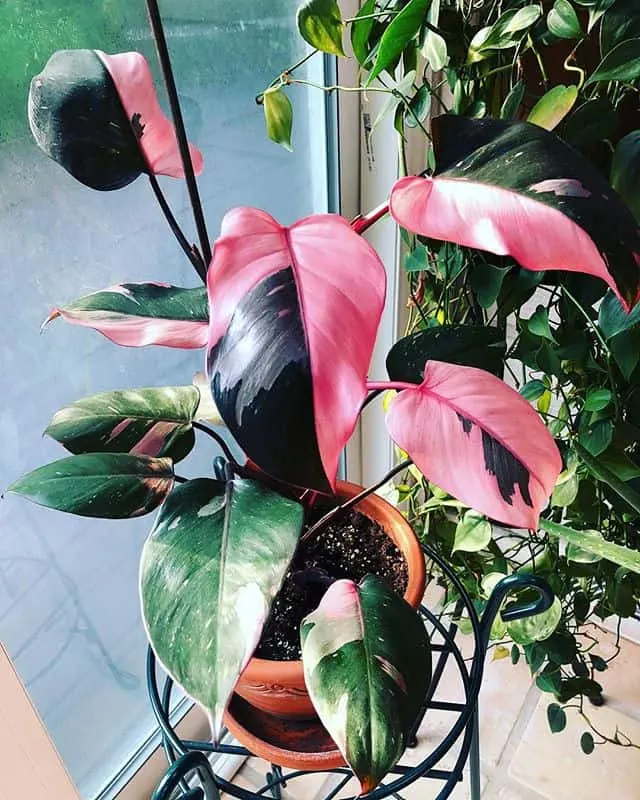
A handful of hours of direct sunlight in the morning or afternoon, provided by East or West windows respectively, would benefit this plant.
Just be sure to avoid direct sun in the middle part of the day when the sun is strongest. Remember, these are jungle plants (this plant happens to be native to Colombia) so they do not want to be in direct sun all day.
That being said, some direct sun early in the morning or late in the afternoon is beneficial indoors. Indoors we have a lot less light than we think.
Since it is slower growing than many Philodendrons, be sure not to keep this plant too far from a window or you will be further disappointed with growth! This is definitely a plant that should reside immediately in front of an appropriate window.
If you don’t have an appropriate window, you can consider using a grow light to provide enough light for your plant’s growth, and also to help maximize the pink coloring.
2. WATERING
Philodendrons in general like to be on the moist end, but of course should always be well drained.
I find that my plant responds best when I give it a thorough watering and let all the excess water drain away.
Then I let the surface of the soil dry out before I water thoroughly again. Ideally, I let at least the top 1/2 inch to 1 inch or so dry out.
You can let even more dry out, but try and avoid letting the potting mix dry out completely.
On the opposite end, never allow your plant to sit in water. If you water your plants in place and move them, be sure to at least discard any excess water that has collected in the saucer underneath, or in the cache pot that it may be sitting in.
Leaving your plant sitting in water will increase your risk of root rot.
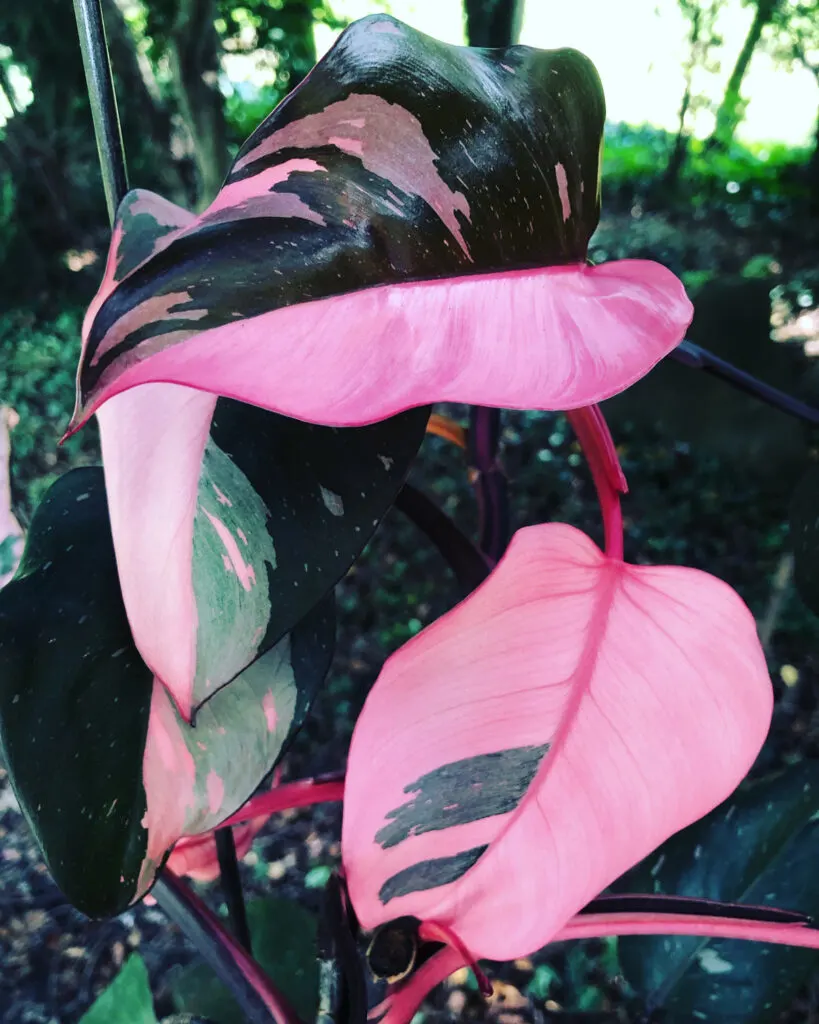
3. SOIL & REPOTTING
As with any Philodendron, they do best in a soil mixture high in organic matter. You can also use your favorite soilless potting mix, but be sure to add a good amount of perlite to it to make it nice and airy.
I rarely use potting mix straight out of the bag anymore. A good default houseplant potting mix that I use frequently is 3 parts of Miracle Gro Potting Mix with 1 part of Perlite.
Mix it up and you have a nice, fluffy potting mix for your leafy tropical plants! This blend works beautifully for Pink Princess.
Or if you want an AMAZING mix that you can use right out of the bag, try the Tropical Climber Soil Blend or the Rainforest Soil Blend from Oh Happy Plants. If you use my link, you will automatically get a 10% discount upon checkout for any products.
As far as repotting goes, if your plant is growing well, you’ll likely need to repot every year or two. If you take your plant out of the pot and it’s root bound (lots of roots around the perimeter, and even circling around the bottom), it is time for a bigger pot.
My general rule of thumb is to only go up one pot size. For example, if your plant was in a 4 inch diameter pot, go up to a 6 inch diameter pot.
The reasoning for this is that if you go up TOO big in pot size, the potting mix will take much longer to dry out and potentially cause issues.
Repotting can be done at any time of year, but if you are a beginner, it is probably safest to stick with Spring or Summer.
Drainage holes are a must so make sure your pots have one or more.
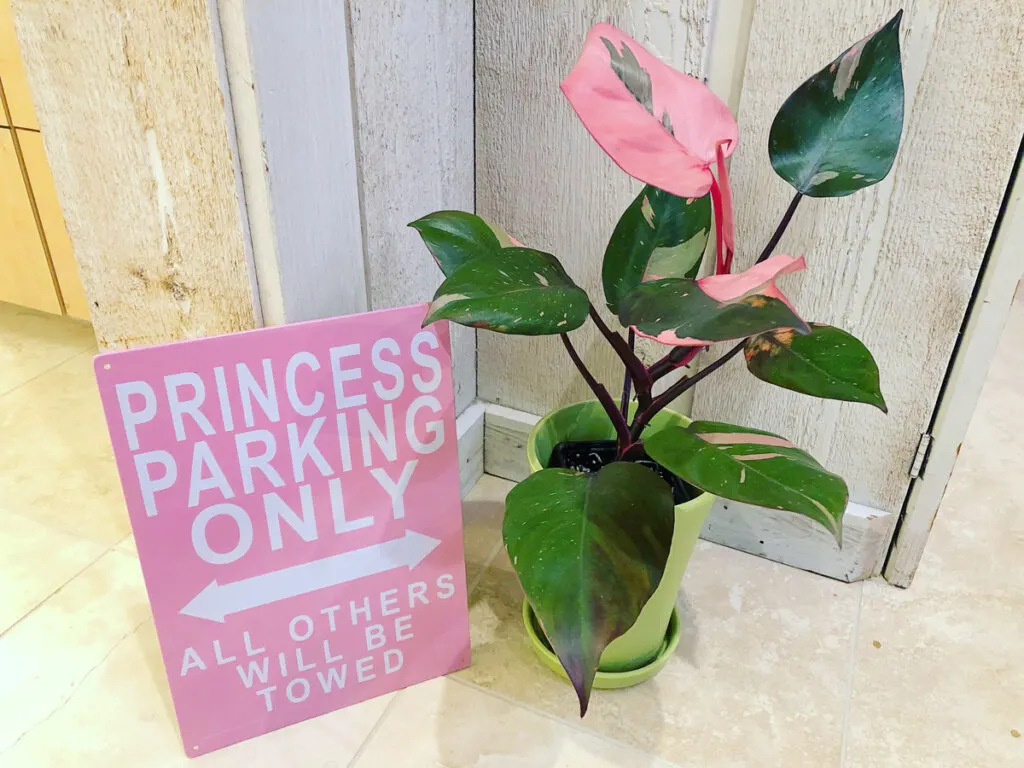
4. FERTILIZING
Fertilize regularly during the active growing season for best results. During winter, when growth has slowed down due to much shorter days, I normally stop fertilizing.
My favorite fertilizer and the one I recommend for all leafy tropical plants (available on Amazon) is Dyna-Gro Grow. My plants absolutely love this fertilizer.
It is a premium fertilizer that contains all the micro and macro nutrients that plants need, and is urea-free.
I simply use 1/4-1/2 teaspoon per gallon of water every time I water during the growing season. Which for my houseplants, I’ll start fertilizing around February or March and then stop around October.
I’ve seen wonderful results using Dyna-Gro Grow. Try it for yourself. You don’t be disappointed! A good fertilizer makes a big difference in your plant’s vigor.
But it is no substitute for sound watering practices, appropriate light conditions, etc. Don’t use fertilizer to fix a plant. But rather, use it to enhance a plant that is already growing in good conditions!
5. HUMIDITY & TEMPERATURE
Like any Philodendron, Pink Princess will appreciate higher humidity levels. If you can provide at least 50% humidity, your plant will love it.
Check out my blog post on increasing humidity for your houseplants.
Paying attention to the humidity level is especially important if you have forced heat. My indoor air in the winter get painfully dry and it’s bad for my skin and my plants!
If you see smaller new leaves, and even crinkled leaves, low humidity could potentially be a contributing cause.
If you need help choosing a great humidifier, check out my blog post where I reviewed 3 different brands of humidifiers. I’m sure one of them will suit your needs and budget.
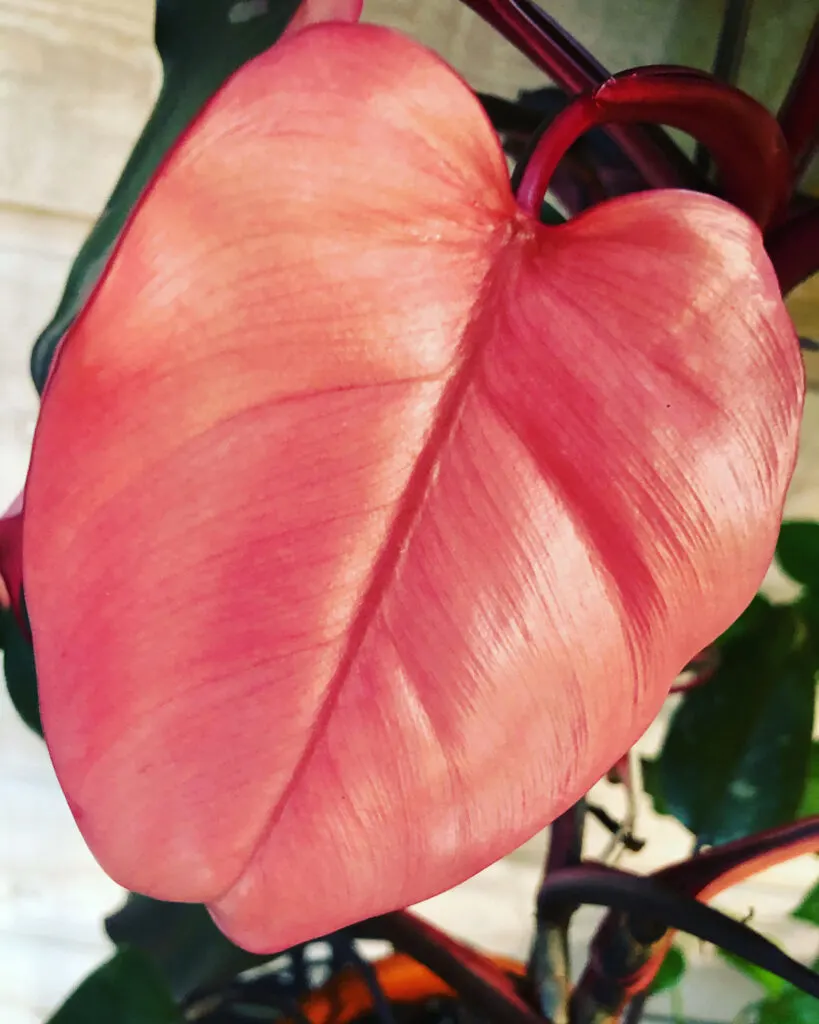
As far as temperature goes, these plants are best grown in minimum temperatures of 60F or above. 60-85F (16-29C) is a great range for growth. If temperatures dip below 60F at night, it is fine as long as it’s just temporary. In general, keep your plant always above 55°F (13°C).
This is important to consider if you want to place your plants outside during the summer months.
CLIMBING SUPPORT
Even though she’s a princess…even princesses need support.
Philodendron erubescens is a vining plant by nature, so be sure to give it a trellis or post to climb on. As it grows, loosely tie the vine to the support structure.
You will achieve the best results from this plant if you provide a nice support for it. The aerial roots will attach and grow up your support.
Whether you use a moss post, a cedar board, or any other support, your plant will appreciate the support.
Be sure not to miss my DIY guide to making your own moss pole. It is better and cheaper than any moss post you will find on the market!

If you don’t want to bother with providing a support, you can continually cut your plant plant and propagate it. The original plant will force out new growth and become bushier. If that’s the look you’re going for, hack away!
PRUNING TO MANAGE VARIEGATION
Now on to the very important part that I was promising!
So many people want to have all pink leaves. But be careful what you wish for. The all pink leaves have zero chlorophyll in them, and if you don’t manage your plant, it will decline.
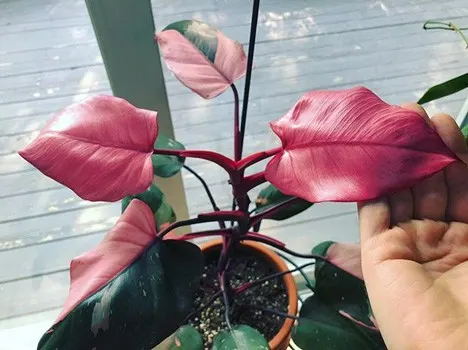
So what are some tips to keep your Philodendron Pink Princess in top shape?
I’ll refer to an interview that I did with the owner and greenhouse manager of Steve’s Leaves. We discussed the topic of variegated plants and the importance of pruning when needed.
You basically want a balance in non-variegated and variegated leaves on your plant.
If your plant starts to be overrun with all green leaves, your plant may revert to all green in time and bye bye Pink Princess. You may have a Green Princess, and who wants that?
On the other end, if you get ALL pink leaves, or leaves that are more than half pink, your plant will slowly decline in time because the variegated portions of the leaves have no chlorophyll at all for the plant to sustain itself.
The plant is basically starving itself if you don’t do something about it. Plants use chlorophyll to photosynthesize and make food for themselves utilizing the sun’s energy. Too much variegation means your plant is not producing enough food.
I needed to prune my Philodendron Pink Princess because it was producing completely pink leaves. I actually rooted the part that I cut off and sent it to someone. I’m not sure if it survived or not, but she was willing to take the risk!
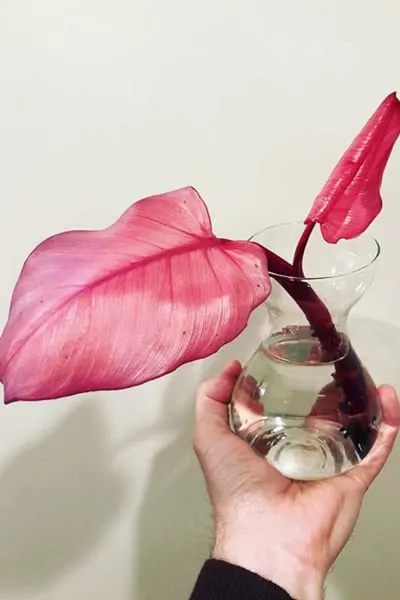
If your plant has started to grow all green leaves, or all pink leaves, you’ll need to prune your plant back a bit. Simply prune your plant back to the next leaf that has a balance variegation.
When I pruned off the all-pink leaves, my plant started to grow back leaves that had a more balanced variegation.
The growth from the node where you cut the plant back at should produce a more variegated growth. The “node” is simply the area where the leaf meets the stem. New growth is produced at the nodes.
Of course, if you do get all pink leaves, it is fine to enjoy the beauty for a while. Just don’t leave them on for too long otherwise your plant will start to decline.
PINK CONGO PHILODENDRON
Please note that Philodendron pink congo is NOT the same as Pink Princess Philodendron. Pink Congo has been chemically altered and eventually revert to all green.
PINK PRINCESS PROPAGATION
I’ve written a separate post detailing 3 great propagation methods, including one unusual method (a special technique using stem cuttings) to help you increase your collection in the fastest way possible!
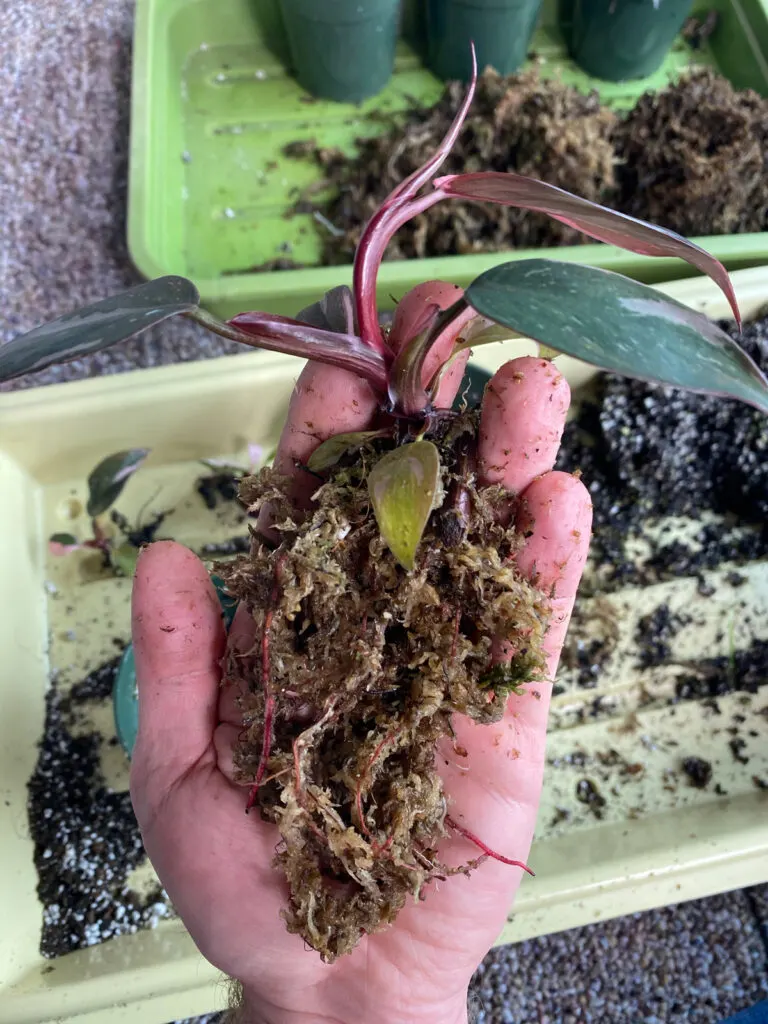
Be sure not to miss Philodendron Pink Princess Propagation: 3 Easy Methods!
One method that I do NOT talk about in that propagation post is growing Pink Princess from seed. I’ve seen many places online selling Pink Princess seeds.
If you attempt to grow these from seed, they will not produce any pink leaves and you will likely get the all-green species of Philodendron erubescens. Seeds will simply not give you an exact genetic copy of the plant.
So spare yourself any frustration and hard earned money and don’t get scammed into buying any Pink Princess seeds.
On a commercial scale, this plant is typically propagated using a tissue culture technique.
IS YOUR PINK PRINCESS DYING?
Did you just receive a Pink Princess in the mail and it doesn’t look so hot? Or maybe it’s struggling to grow, or growing slowly? Brown spots on the leaves?
Be sure not to miss my Pink Princess Philodendron: 11 Critical Problems & Fixes blog post.
I’ve collected all the common problems that my readers have had and talked about why each problem is occurring.
If you just received your plant in the mail, be sure to avoid these 5 newbie mistakes.
COMMONLY ASKED PINK PRINCESS QUESTIONS
Why is Pink Princess slow growing?
Like any variegated plant, it will grow slower than it’s non-variegated counterpart because it has less chlorophyll.
How big do Pink Princess plants get?
Over time, with good conditions and care, they can get several feet tall, but it is very important to provide support with a moss pole, a wooden stake or plank, or similar support.
Is Pink Princess toxic to pets?
Like all aroid plants, Pink Princess is toxic to dogs and cats because of insoluble calcium oxalates according to the ASPCA.
Why are Pink Princess plants so expensive?
Quite simply, supply and demand. There is an extraordinary demand for this plant, and this drives some pretty outrageous prices. This, coupled with the fact that variegated plants grow slower, will compound the issue. In addition, variegation is very unstable so when nurseries propagate, every single plant will be different and not all of them may be suitable for sale if they are not pink enough. It can take months until plants are ready for sale.
Can I put multiple vines of Pink Princess in the same pot?
Yes absolutely! This is one way to achieve a fuller look. There is nothing wrong with only having one vine per pot. It is all personal preference.
Is Pink Congo the same as Pink Princess?
Absolutely not. In fact, the Pink Congo plant is a scam. It looks very similar, except Pink Congo leaves are a little pointier and leaves are entirely pink. Rumors have emerged that Pink Congo has been chemically altered in order to produce a certain hormone that temporarily changes the color of the leaves. Eventually the plant reverts to all green. Don’t be fooled by the Pink Congo scam.
Is Pink Princess affected by any pests?
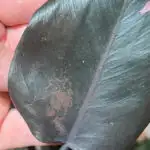
Generally, these plants aren’t plagued by too many pests, though occasionally you may find spider mites, mealybugs, scale, or even thrips like in the photo. If you have perpetually moist soil, you can also attract fungus gnats.
Why is my Pink Princess getting yellow leaves?
There are numerous reasons for plants developing yellow leaves. If you let your potting mix dry out completely for too long, you’ll notice the base of your plant developing yellow leaves. Perpetually moist soil, especially compounded with low light, will also cause yellowing.
Why do my Pink Princess Philodendron plants have dark green leaves?
Even if you have the right conditions to encourage pink variegation (good light, etc), sometimes these plants can revert and grow nothing but dark green leaves. If this is the case, trim your plant’s stem back to the first leaf that exhibits good variegation. After pruning it back, this may encourage the new growth to grow in with pink variegation. Keep in mind that these plants are not stable so the results can vary.
Do you have a Philodendron Pink Princess? I’m looking forward to placing mine outdoors in the summer so it can really take off. If you do place any of your plants outside, be sure to harden them off properly.
How is your PPP doing? Comment below! I’d love to hear!

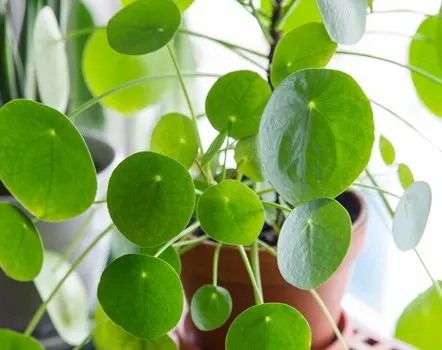
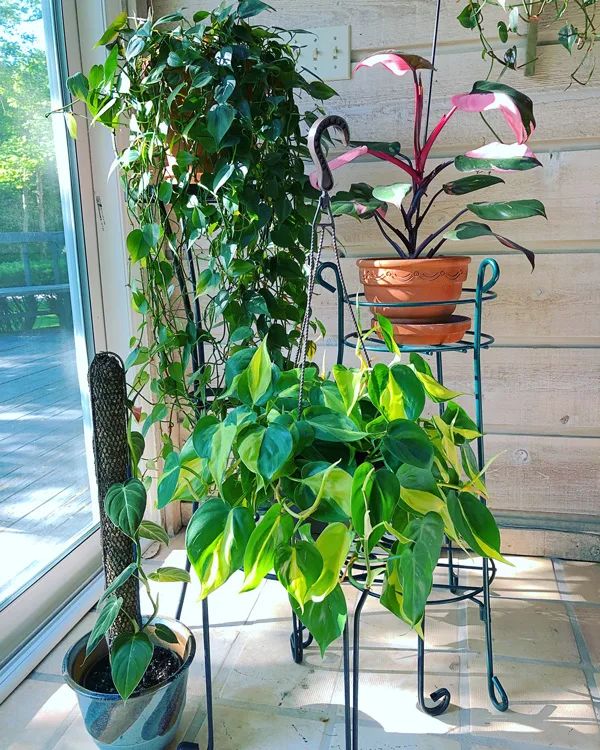
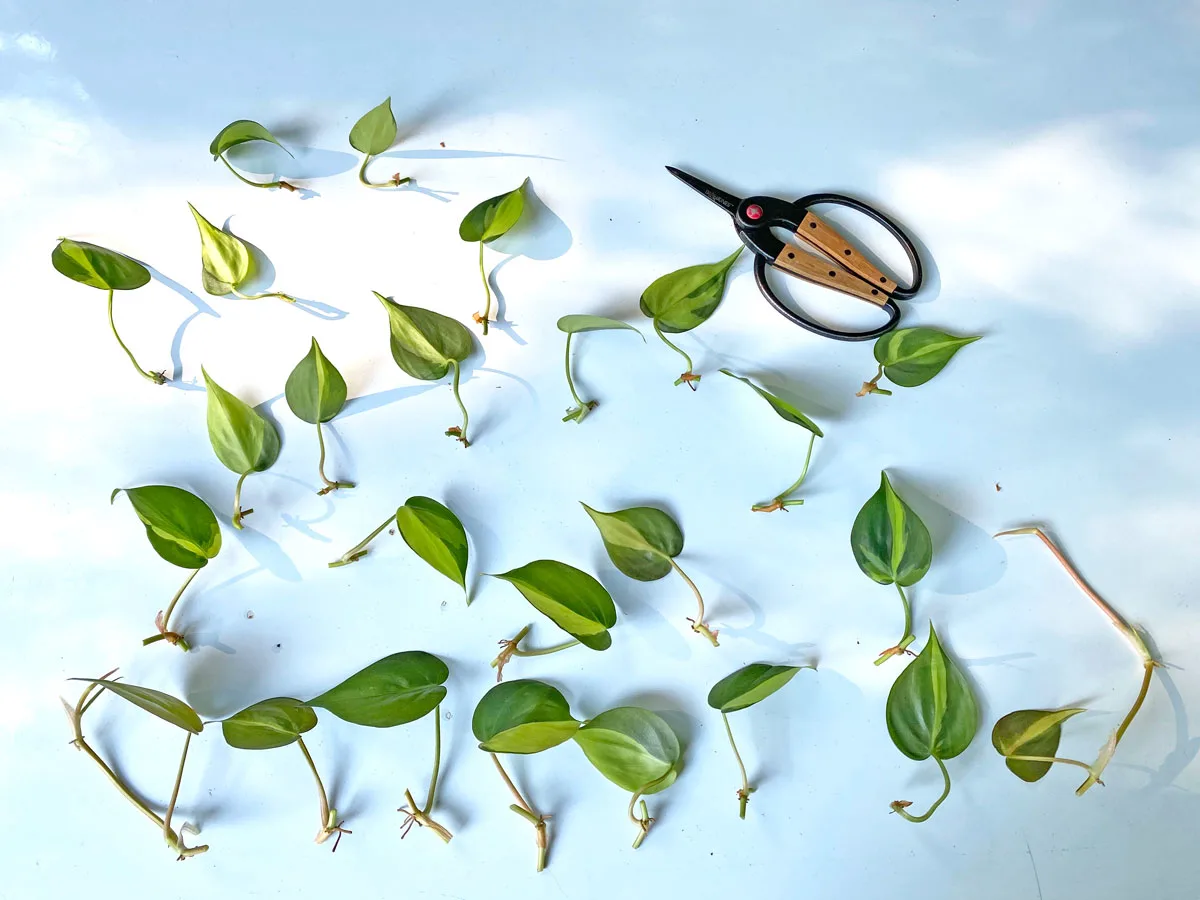
Rosemarie
Tuesday 28th of November 2023
I had to leave my PPP in care of my family and she kind of got neglected 🥺, although I am able to get her healthy and growing again, I noticed that she seems to be weak at the base. She is a bit crooked also so I don't really know how to support her. She's about 8 months with me but I think she was well established before I found her. She's a rescue from a very sad life.
Raffaele
Tuesday 28th of November 2023
Remember that they are climbers, so it will need a support. I would just drive a stake into the pot and tie the plant to the stake. I hope you can nurture it back to life!
Cindy Million
Wednesday 5th of July 2023
Hello I hope this gets read as the last post here was in 2019🫤 I live in NE Florida I wanted to ask if a Pink Princess would grow on a back west facing covered porch very bright and hot conditions only partial evening sun on a portion of the porch no issues with humidity but temperatures can track the high 90’s once cooler weather arrives I would move her into the house and provide correct conditions Thanks so much Cindy
Raffaele
Wednesday 5th of July 2023
Hi Cindy! Your plant should be OK there. Just make sure you water your plant well during really hot weather. Maybe try and place it in an area of the porch that has no sun (this would be particularly beneficial during the hottest weather). A little sun outside is fine, as long as it's not too much.
aroidsale
Monday 7th of November 2022
good and complete article, thanks for the information, I like it.
Selena
Thursday 30th of June 2022
I am looking for someone who knows the difference in a marble pink princess and a tricolor? Or is tricolor only seen in white princess?
Raffaele
Friday 1st of July 2022
Hi Selena, I'm actually not familiar with tricolor unfortunately. If you'd like, you can use the contact form on my website to email me, and when I reply, you can attach a photo of your plant and I can take a look and give you my opinion.
Mellie Barrientos
Thursday 9th of June 2022
I can’t get mine to grow I’ve had for a month and it’s till the same.
Raffaele
Friday 10th of June 2022
They can be very slow growing, especially if you just purchased it and has had a change in environment. Make sure you're giving it enough light and follow all the tips in this post and it should start growing soon.